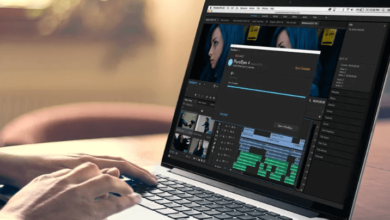Multicam Editing: Techniques and Best Practices

Multicam editing represents a sophisticated approach to video production, allowing for the integration of diverse camera perspectives to enrich storytelling. Effective execution hinges on several best practices, from meticulous project organization to precise audio-video synchronization. Understanding the nuances of angle switching is essential for maintaining narrative coherence, while the final touches of color grading and audio mixing can elevate the overall quality. However, the intricacies involved in each of these processes can often be overlooked, leading to missed opportunities for enhancement. What specific techniques can be implemented to ensure a seamless and professional outcome?
Understanding Multicam Editing
Multicam editing is a powerful technique that allows filmmakers and video editors to seamlessly integrate footage from multiple camera angles into a cohesive final product.
Effective footage organization is crucial in this process, as it enhances the production workflow.
Utilizing advanced editing software streamlines transitions and synchronizes audio, enabling editors to craft dynamic narratives that engage audiences while maintaining creative freedom.
Setting Up Your Project
To effectively harness the power of multicam editing, proper project setup is fundamental.
Begin with meticulous project organization, ensuring all clips are clearly labeled and stored in dedicated folders. This facilitates seamless timeline management, allowing for efficient navigation and swift edits.
Syncing Audio and Video
When aligning audio and video in a multicam project, precision is key to achieving a polished final product.
Employ various audio synchronization methods, such as waveform matching and clap indicators, to enhance accuracy.
Additionally, utilize effective video alignment techniques, like timecode and reference points, to ensure seamless integration.
Mastering these approaches will elevate your editing, allowing for a harmonious and dynamic viewer experience.
Switching Between Angles
Effortlessly switching between angles can significantly enhance the storytelling aspect of your project.
Mastering angle selection is crucial; it enables you to capture the essence of each moment.
Pay close attention to cut timing to maintain flow and engagement.
Striking a balance between dynamic shifts and narrative coherence will empower your audience, allowing them to immerse themselves fully in your visual journey.
Finalizing Your Edit
Finalizing your edit is a crucial phase that transforms raw footage into a polished narrative. This stage involves meticulous color grading to ensure visual consistency, enhancing the emotional impact of your story.
Simultaneously, audio mixing is vital; balancing dialogue and sound effects creates an immersive experience. By paying attention to these details, your project achieves a professional standard that resonates with viewers.
Conclusion
In the realm of multimedia storytelling, multicam editing emerges as a sophisticated art form, transforming disparate angles into a harmonious narrative. Through meticulous organization and seamless audio-video synchronization, editors craft a rich tapestry of visual experiences. The finesse of angle switching enhances the narrative’s rhythm, while thoughtful finalization techniques elevate the project to a polished masterpiece. Embracing these best practices ensures that the final product captivates audiences, inviting them into a world where every moment resonates with clarity and intention.





